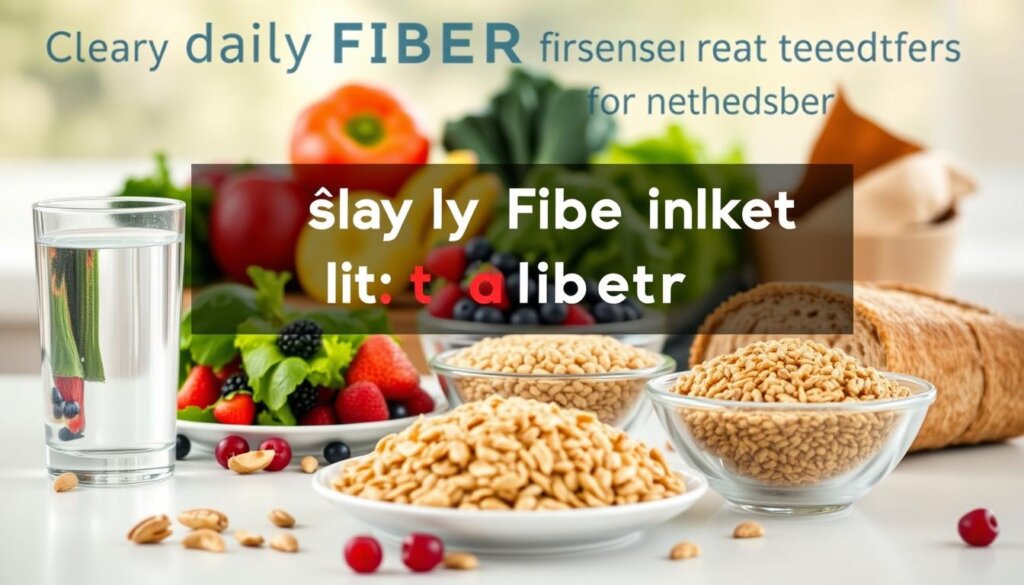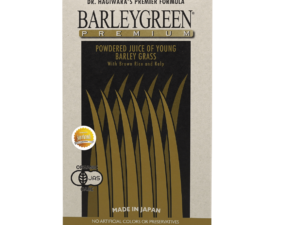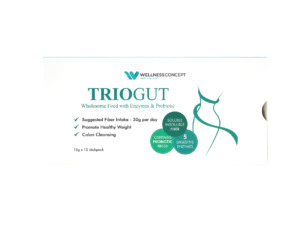Shockingly, 95% of U.S. adults fail to consume enough of a nutrient that could transform diabetes care. This widespread deficiency impacts blood sugar control, heart health, and weight management – three critical factors for those managing metabolic conditions.
Current guidelines suggest adults need 22-35 grams of this essential nutrient daily. For individuals with diabetes, meeting these targets becomes particularly vital. Proper intake helps slow glucose absorption and supports digestive wellness, creating powerful ripple effects across overall health.
Wellness Group’s nutrition specialists emphasize that personalized approaches work best when incorporating this nutrient into daily meals. “Everyone’s needs differ based on medical history and lifestyle,” explains their team, available via WhatsApp at +60123822655 during business hours.
Key Takeaways
- Only 5% of Americans meet daily fiber requirements
- 22-35 grams daily supports diabetes management
- Fiber helps stabilize blood sugar levels naturally
- Heart health benefits complement glucose control
- Professional guidance improves dietary success
This guide explores science-backed strategies to optimize intake through food choices and meal planning. Readers will discover practical ways to enhance their diet while addressing diabetes-specific nutritional challenges.
Understanding the Role of Fiber in Diabetes Management

Click to LEARN MORE
Plant-based foods contain a unique carbohydrate that acts like a superhero for metabolic health. This nutrient comes in two distinct forms, each with specialized roles in managing diabetes and supporting bodily functions.
Defining Dietary Fiber and Its Types
Dietary fiber refers to plant components that resist digestion. The two main types work differently:
| Type | Primary Sources | Key Benefits |
|---|---|---|
| Soluble Fiber | Oats, beans, apples | Forms gel to slow sugar absorption |
| Insoluble Fiber | Whole grains, vegetables | Adds bulk for smooth digestion |
Soluble fiber dissolves in water, creating a thick gel that traps sugars and fats. Insoluble fiber remains intact, scrubbing the digestive tract like nature’s broom. Both types collaborate to maintain steady energy levels and support digestive enzyme production.
How Fiber Influences Blood Sugar Levels
The gel from soluble fiber acts as a natural speed bump for carbohydrates. This delay allows the body to process glucose gradually, preventing sudden spikes. Meanwhile, insoluble fiber ensures efficient waste removal, reducing inflammation that can affect insulin sensitivity.
Regular consumption of both fiber types creates a protective effect. Studies show balanced intake helps maintain healthier blood sugar levels over time while supporting heart health – crucial for those managing diabetes.
How much fiber should a diabetic have a day?
Personalized nutrition plans make all the difference in managing metabolic health. While general recommendations provide a starting point, individuals with diabetes often benefit from precise adjustments based on their unique needs.

Recommended Daily Fiber Intake According to Experts
Nutrition authorities establish clear benchmarks for daily consumption. Adults should aim for 22-35 grams of dietary fiber, with specific targets varying by age and gender:
| Age Group | Women | Men |
|---|---|---|
| 19-30 years | 28 grams | 33.6 grams |
| 31-50 years | 25.2 grams | 30.8 grams |
| 51+ years | 22.4 grams | 28 grams |
Younger adults typically require higher amounts to support active metabolisms. Men generally need 3-5 grams more per day than women in the same age bracket.
Guidelines from the American Diabetes Association
The ADA aligns with national dietary standards but notes potential benefits from higher intake. Research indicates consuming 44-50 grams daily may enhance blood sugar regulation for some individuals.
Their framework suggests calculating needs as 14 grams per 1,000 calories consumed. This approach helps people with diabetes tailor intake while managing energy levels. Gradual increases paired with proper hydration help prevent digestive discomfort when boosting consumption.
Meeting these targets requires strategic food choices, but the rewards – steadier glucose levels and improved overall health – make the effort worthwhile. Always consult healthcare providers when making significant dietary changes.
Incorporating High-Fiber Foods into a Diabetic Meal Plan
Transforming your plate with fiber-rich choices offers delicious solutions for diabetes management. Strategic selection of whole foods creates meals that nourish while stabilizing blood sugar levels naturally.
Powerhouse Ingredients for Daily Meals
Whole grains like brown rice and quinoa form excellent bases for main dishes. A half-cup of oats delivers 5 grams of fiber, while barley adds chewy texture to soups. For vegetables, artichokes and Brussels sprouts shine with nearly 7 grams per serving.
Legumes pack a double punch – chickpeas provide 13 grams of fiber per cup alongside plant-based protein. Avocados and almonds make smart additions to salads or snacks, offering healthy fats with their dietary fiber content.
Flavorful Twists on Everyday Eating

Click to LEARN MORE
Start mornings with chia seed pudding layered with mixed berries. Whip up lentil tacos using whole-grain tortillas for lunch. Dinner could feature roasted sweet potatoes stuffed with spiced black beans.
Snack time becomes an opportunity with air-popped popcorn sprinkled with nutritional yeast. These creative swaps help maintain steady energy levels while hitting daily fiber targets effortlessly.
Remember to hydrate well when increasing fiber intake. Pairing water-rich vegetables like cucumbers with high-fiber foods supports comfortable digestion and optimal nutrient absorption.
Expert Dietary Tips and Wellness Group Insights
Managing diabetes effectively requires more than counting carbs. Wellness Group’s nutrition specialists highlight that smart dietary choices create lasting benefits for both blood sugar control and overall health.
Practical Advice from Wellness Group's Experts
A fiber-rich diet does double duty for people with diabetes. Soluble fiber actively reduces LDL cholesterol, lowering risk of heart complications. “This nutritional approach addresses multiple health concerns simultaneously,” notes the Wellness Group team.

Their experts craft personalized plans considering medication interactions and digestive needs. Balanced fiber intake supports weight management while preventing blood sugar spikes – crucial for sustainable diabetes care. Discover more about fiber’s role in diabetes management through tailored meal strategies.
Contact Information & Business Hours
Wellness Group makes professional guidance accessible via WhatsApp at +60123822655. Available Monday-Friday 9:30 am-6:30 pm and weekends 10 am-5 pm, their team helps individuals:
- Balance fiber intake with other dietary needs
- Address digestive sensitivities safely
- Integrate supplements when necessary
Regular consultations ensure dietary adjustments align with changing health conditions. This proactive approach helps people with diabetes maintain optimal nutrition while managing cardiovascular risk factors effectively.
Practical How-To Strategies for Increasing Fiber Intake
Boosting daily fiber consumption requires smart tactics that align with your lifestyle. Small, intentional changes create lasting habits while supporting metabolic health.
Tips for a Gradual Increase and Preventing Digestive Discomfort
Start by adding 3-5 grams of fiber daily for one week. Swap white bread for whole grain versions at breakfast. Introduce legumes slowly – try adding 2 tablespoons of lentils to soups initially.
Hydration is key. Drink one glass of water with each high-fiber meal. This helps move fiber through your digestive system smoothly. Track reactions to different foods using a simple journal.
| Approach | Gradual Method | Rapid Method |
|---|---|---|
| Weekly Increase | +3-5 grams | +10 grams |
| Hydration | 8 cups water/day | 6 cups water/day |
| Result | Minimal discomfort | Possible bloating |
Easy Swaps and Complementary Supplements
Replace snacks with roasted chickpeas or pear slices. Choose brown rice instead of white – it offers 3x more fiber per serving. For baking, use oat flour instead of all-purpose.
When dietary changes aren’t enough, fiber supplements can help. Psyllium husk mixes well into smoothies. Start with half a teaspoon daily and increase weekly. Always consult your doctor about potential digestive wellness strategies.
Read nutrition labels to identify products with 5+ grams of fiber per serving. Distribute intake across meals – add chia seeds to morning yogurt and flaxseed to dinner salads. This approach maintains steady digestion throughout the day.
Conclusion
Emerging research confirms what nutrition experts have long advocated – a fiber-rich diet significantly impacts diabetes outcomes. Studies demonstrate consistent improvements in blood sugar regulation and reduced cardiovascular risks when meeting daily targets. The 2018 review linking higher intake to better fasting glucose levels reinforces this connection.
For those managing diabetes, achieving 22-35 grams daily proves transformative. Steady energy levels, improved digestion, and reduced heart disease risks create compounding benefits. While adjustments require planning, small changes like swapping refined grains for whole-food alternatives make goals attainable.
Wellness Group’s specialists highlight personalized approaches as key to success. Their team helps individuals balance nutritional needs through practical meal strategies available via WhatsApp consultations. Remember, gradual increases paired with hydration prevent digestive discomfort when boosting fiber consumption.
Ultimately, prioritizing this nutrient supports both immediate blood sugar control and long-term health. As evidence mounts, embracing fiber becomes not just a dietary choice but a powerful tool in diabetes care. Always consult healthcare providers when modifying nutritional plans for optimal safety and results.
FAQ
What’s the connection between fiber and blood sugar control?
Dietary fiber, especially soluble types like oats or beans, slows carbohydrate absorption. This helps stabilize glucose spikes after meals, making it easier to manage sugar levels for those with diabetes.
Are whole grains better than refined grains for diabetics?
Yes! Whole grains like quinoa or brown rice retain their bran and germ, providing more nutrients and fiber. They digest slower, preventing rapid blood sugar spikes compared to refined options like white bread.
Can increasing fiber intake reduce heart disease risks?
Absolutely. High-fiber diets support heart health by lowering LDL cholesterol and improving blood pressure. For diabetics, this is crucial since they face higher cardiovascular risks.
How can someone add more vegetables without digestive issues?
Start with small portions of cooked veggies like spinach or broccoli. Gradually introduce raw options, and drink plenty of water to help the digestive system adjust comfortably.
Do fiber supplements work as well as natural sources?
Supplements like psyllium husk can help meet daily goals but lack the vitamins and antioxidants found in whole foods. Prioritize natural sources like lentils or berries for balanced nutrition.
What’s a simple high-fiber snack idea?
Try apple slices with almond butter or roasted chickpeas. Both options combine soluble and insoluble fiber for steady energy and improved digestion.
Where can I get personalized advice for my meal plan?
Wellness Group’s experts offer tailored guidance. Reach out via WhatsApp at +60123822655 during business hours (Mon-Fri, 9 AM–5 PM) for support.






